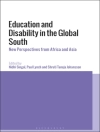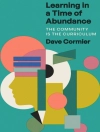Paige Michaels comes from the kind of wealth that few experience. The daughter of a notoriously successful banker who wielded great political power, she grew up in an extraordinary world peopled by the leaders of tomorrow. Now one mistake rooted in her past is threatening to unravel her perfect life. After years as a stay-at-home mother in New Jersey, Mollie Johnston convinces her husband to move back to New York, to fulfill her dream of living amid the bright lights. Mollie is uncomfortable in her own body and always worried about how others see her. Once she sees how the other half lives, will she come to see herself and her marriage more clearly? Gwen Mc Andrews is the ultimate New York socialite, and the envy of those impressed by her grandeur, but is there more than meets the eye? Along with Paige, Mollie and Gwen, a cast of characters’ stories are interwoven into the text—parents, children, care-takers, childhood friends, old lovers and spouses. American Circumstance is a novel about appearance versus reality; how people’s lives and relationships look to others versus how they are experienced, and the complex ways that social class shapes identity and relationships. American Circumstance provides a window into the replication of wealth, power and privilege. Through the protagonist’s work with an international women’s organization the novel is underscored with a narrative about how gender, social class and race intertwine on a global scale, and problems are all relative. There are also strong narratives about how family and friends influence identity and the things we say and don’t say to each other. While fictional, American Circumstance is grounded in autoethnographic observations and more than a decade of teaching and research about gender, class, race, identity and relationships. The novel can be used as supplemental reading in courses that deal with gender, social class, power, family systems, relational communication, intimate relationshipsand/or identity, or it can be read entirely for pleasure.
Daftar Isi
Acknowledgments; Preface; PART ONE; Chapter 1; Chapter 2; Chapter 3; Chapter 4; PART TWO; Chapter 5; Chapter 6; Chapter 7; PART THREE; Chapter 8; Chapter 9; Chapter 10; About the Author.












